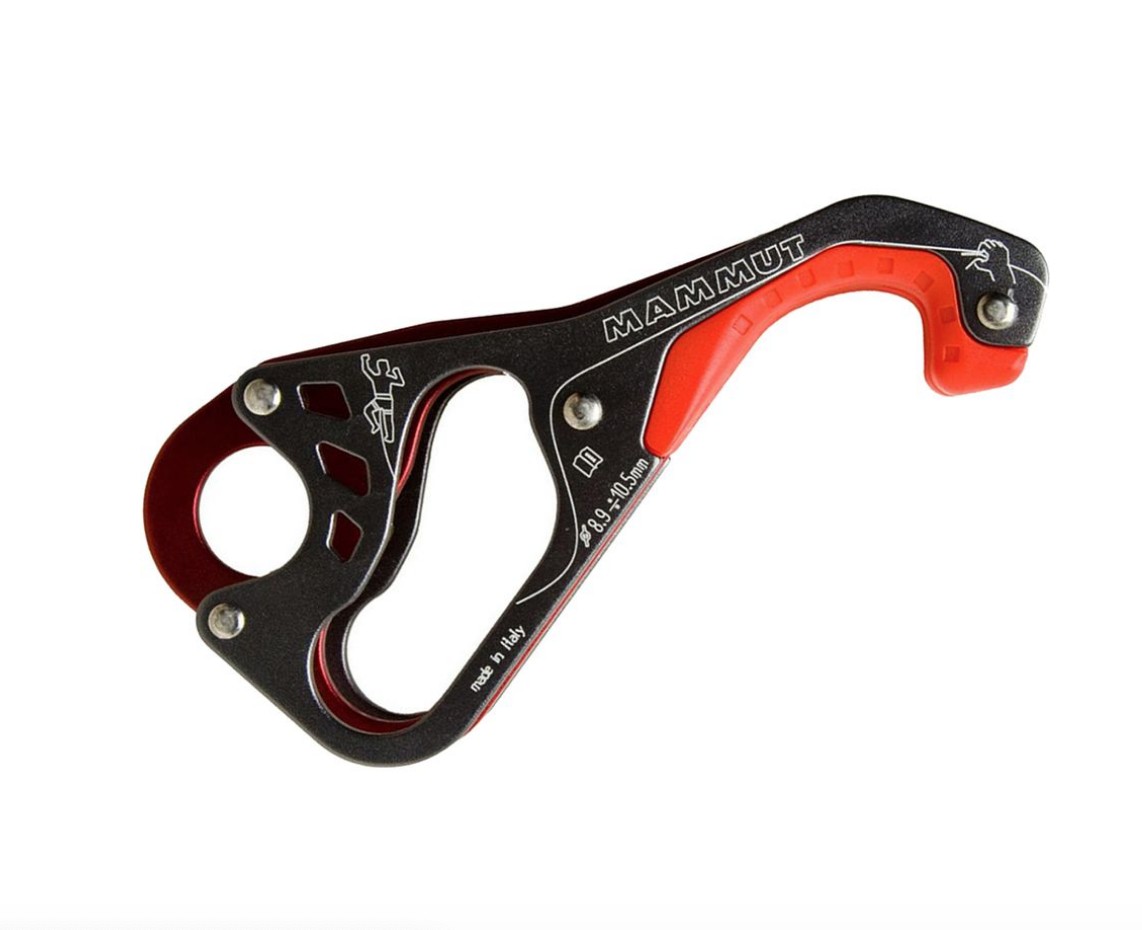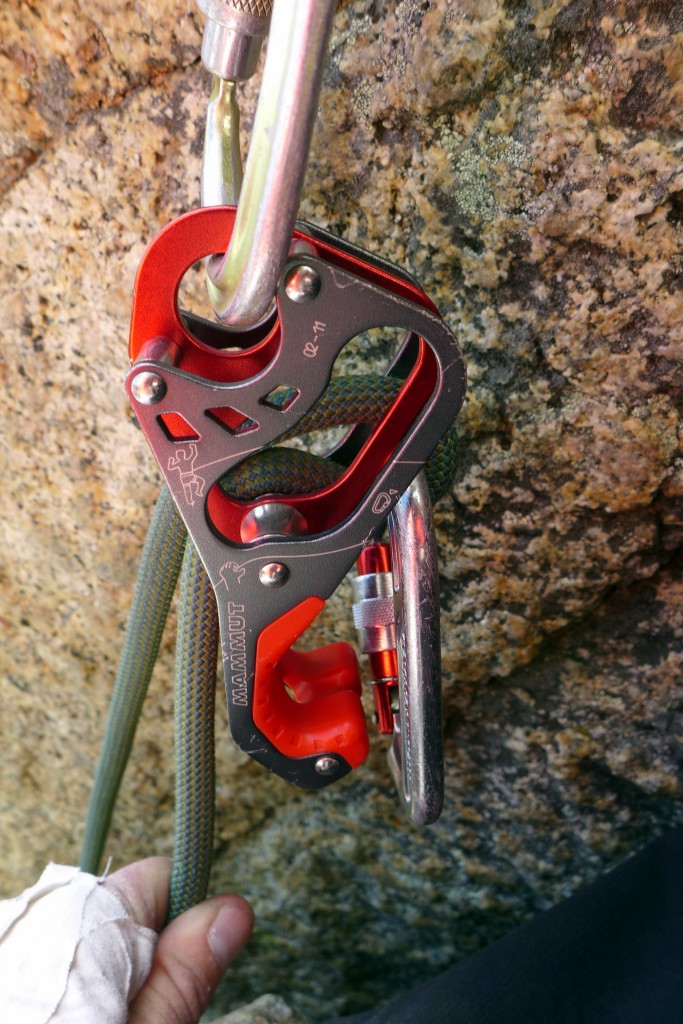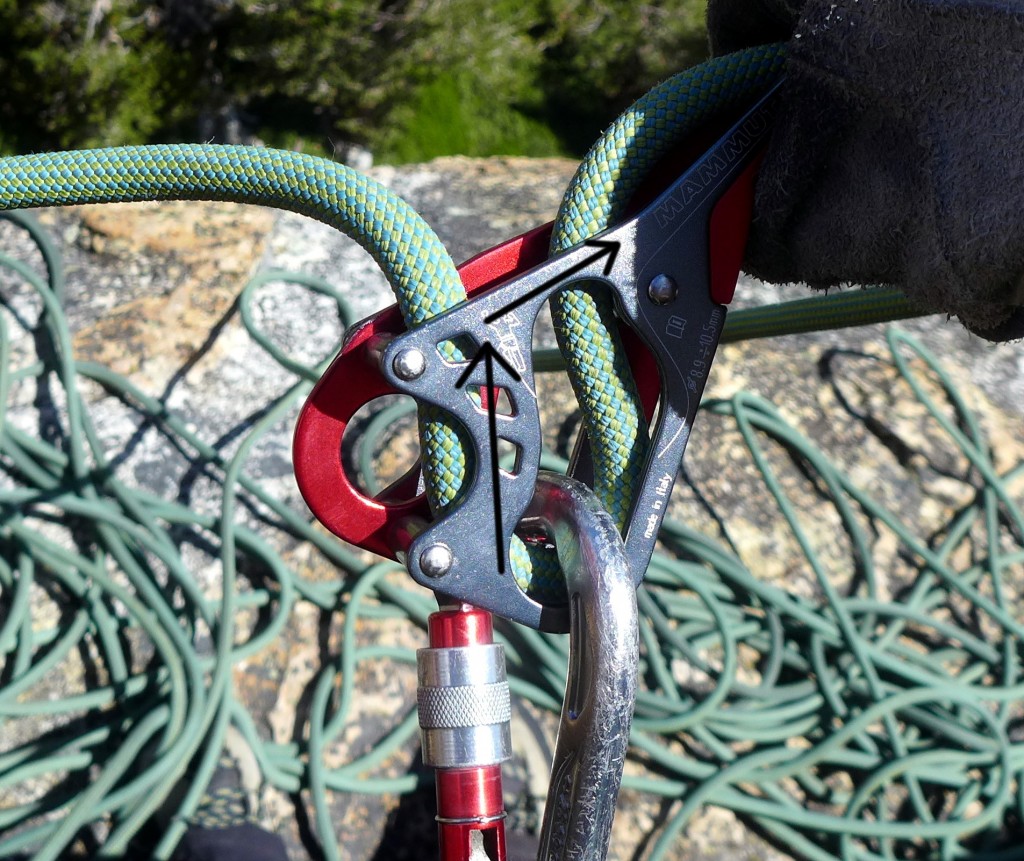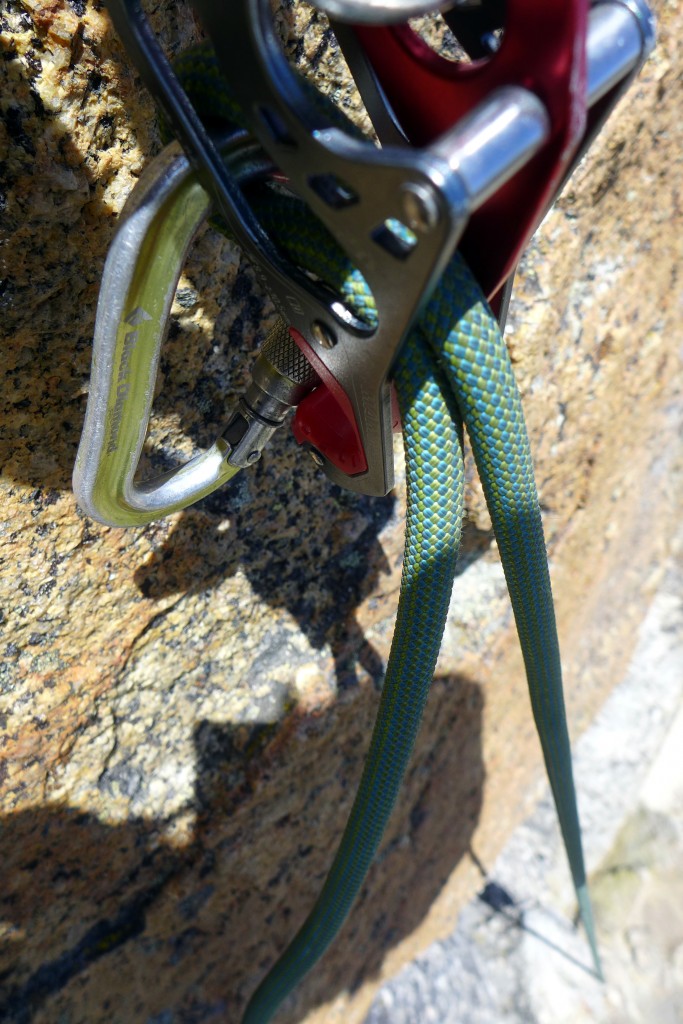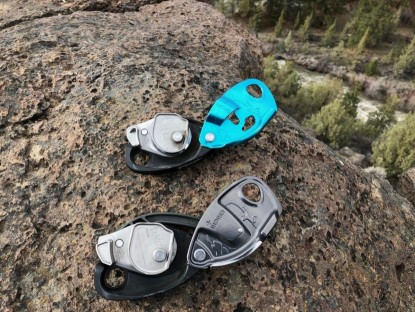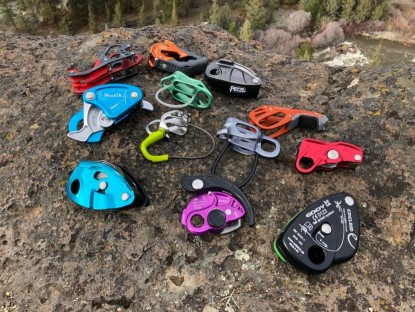Mammut Smart Alpine Review
Our Verdict
Our Analysis and Test Results
The Mammut Smart Alpine is a passive assisted braking belay device that also works in auto-block mode for belaying a second directly from an anchor. Like most passive assist braking devices, it has no moving parts, but provides extra catch and braking power by pinching the rope in between the device and the carabiner when weighted. The belay technique, especially when lead belaying, is a bit different than a standard tube-style device, and takes a little bit of effort to learn and get used to. Overall we like the function of the updated Mammut Smart 2.0 a bit better, but lament that it does not have auto-block mode or handle double ropes, like this one does.
Check out the Mammut Smart Alpine instructions here for recommended techniques by Mammut.
Performance Comparison
Catch/Bite
The Smart Alpine operates like a basic tube model but with an extra bit of braking force to catch falls largely by itself. It accomplishes this via a clever angled slot in the side of the modified tube that uses the pull of a fall to direct the belay biner towards the brake strand, pinching the rope. This creates cheap and simple braking assistance without the cams or complexity of active mechanical designs. Compared to those devices, the Smart Alpine provides a similar initial catch. However, when the climber stops falling and is hanging on the rope, the Smart doesn't fully lock and some grip strength is required to keep most ropes from slowly slipping through. For this reason, we preferred the sharper lock found on other passive assist devices. The Smart 2.0 has improved locking power compared to this device, and we didn't notice the same creep with it as we did with the Alpine. Hopefully those changes will migrate over and we'll soon see an Alpine 2.0 from Mammut.
Lowering/Rappelling
The Smart Alpine's boxy design requires a large, wide, carabiner. Some users have noted that this design keeps the carabiner in a fixed position and can cause the rope to rub along only one section, shortening the lifespan of that carabiner. It's also hard to thread a bight into the device during rappels without unclipping it from the belay carabiner, increasing the chance of dropping it. To lower or rappel you have to lift up on the handle to prevent the device from locking up and keep rope sliding through. This engages your shoulder and can be tiring during long descents. Compared to some of the other passive devices we compared it against, the Smart Alpine is a little more jerky. Unlike many classic tube models, the Smart Alpine isn't reversible, which limits your friction options.
Feeding Slack
To feed slack to a leader with the Smart Alpine you have to pull up on the handle to keep it from locking while rope passes through. This is an extra motion compared to a basic tube, but not as complex as the various procedures required with different active assisted locking devices. Furthermore, our tests showed us that the Smart Alpine is not the smoothest slack feeder even among other passive assist devices.
Weight/Bulk
At 4.5 ounces, the Smart Alpine is on the lighter side of assisted braking devices. This is, however, almost double the weight of its closest competitor. In addition, the Smart Alpine is bulky and takes up more space than many other devices.
Auto-block (resistance belaying a second)
High friction in auto-block mode plagued all the devices capable of double rope rappels, especially the Smart Alpine. We observed less resistance with some of the single strand devices, however, in our testing with a 9.5 mm Sterling rope and a Petzl Attache Carabiner, we found the resistance with the Smart Alpine to be significantly more than any other device that we tested. This largely negates most of the benefits of this device for multi-pitch climbing, and will certainly wear your arms out over time.
We do caution users to be careful when clipping the Smart Alpine directly to an anchor because its long handle can get pressed against obstacles (rock, slings, etc.) that can interfere with the assisted locking in auto-block mode. The setup can seem a bit complex as well, so be sure to study Mammut's recommended configuration. As with any device in any belay mode, you always need to keep a hand on the brake.
Value
This device isn't a steal, but it's pretty affordable for assisted braking capability. The stainless steel used for components that contact the rope increases its durability and enhances overall value.
Conclusion
The potential performance benefits of passive assisted braking devices like the Smart Alpine excited our testers and buoyed the possibility of a revolution in belay devices. Assisted locking and two slots for double rope rappels, what more could we ask for? Unfortunately, these benefits are achieved with substantial compromises in the Smart Alpine. Although it can assist braking and rappel two ropes, it does both of these tasks poorly. In addition, it's bulky and creates some jerkiness when feeding slack. Nevertheless, we'll keep searching for single device that can the combine the pleasant handling and reliable catch of active assisted locking devices with the ability to rappel two strands smoothly.


